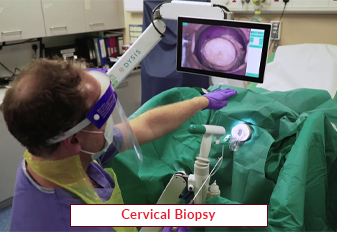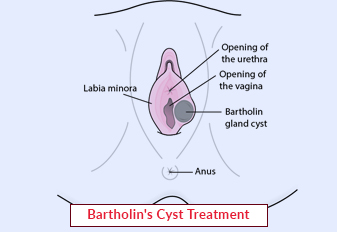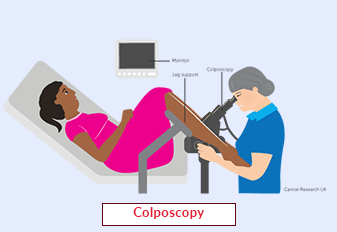Cervical Biopsy

A cervical biopsy is a medical procedure performed to evaluate abnormal cervical cells or suspicious lesions on the cervix. It is a crucial diagnostic tool used to detect precancerous or cancerous conditions of the cervix. In this article, we will explore the concept of cervical biopsy, its importance in diagnosing cervical abnormalities, and the procedure involved.
Book an AppointmentAbout Cervical Biopsy
A cervical biopsy is a procedure in which a small sample of cervical tissue is obtained for laboratory analysis. The cervix, located at the lower end of the uterus, plays a vital role in reproductive health. Abnormalities in cervical cells, often caused by human papillomavirus (HPV) infection, can lead to precancerous or cancerous changes.
Procedure of Cervical Biopsy
The procedure for cervical biopsy typically involves the following steps:
-
Preparation: Before the procedure, the patient may be instructed to empty their bladder. It is essential to inform the healthcare provider about any allergies or medications being taken.
-
Positioning: The patient is positioned on a gynecological exam table, similar to a pelvic exam. The feet are placed in stirrups, allowing the healthcare provider clear access to the cervix.
-
Speculum Insertion: A speculum is gently inserted into the vagina to visualize and access the cervix. This may cause a sensation of pressure but should not be overly painful.
-
Local Anesthesia (optional): Depending on the healthcare provider's preference and the patient's comfort, a local anesthetic may be applied to the cervix to numb the area. This is typically done using a numbing spray or injection.
-
Tissue Sample Collection: Different techniques may be used to obtain a tissue sample from the cervix:
a. Punch Biopsy: A small instrument called a biopsy punch or forceps is used to remove a small piece of cervical tissue. This may cause a brief pinch or cramp-like sensation.
b. Endocervical Curettage (ECC): A narrow instrument called a curette is gently inserted into the cervical canal to scrape and collect cells from the endocervical area. -
Hemostasis and Care: After the tissue sample is obtained, any bleeding is usually controlled using a specialized solution or a small electric probe. The speculum is then removed, and the patient is provided with instructions for post-biopsy care.
-
Laboratory Analysis: The tissue sample is sent to a laboratory for microscopic examination by a pathologist. The results are typically available within a few days to a week.
Require Assistance?
Get A Quick Callback From Our Healthcare Experts






